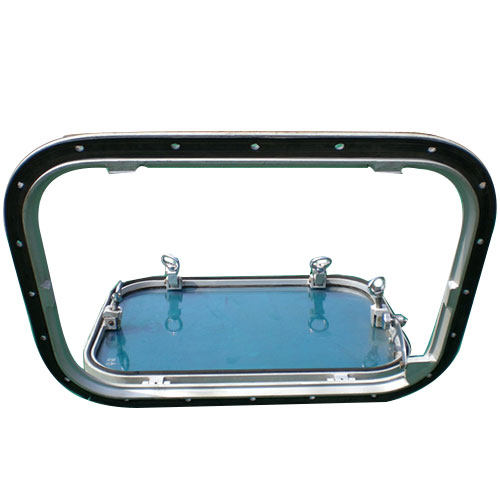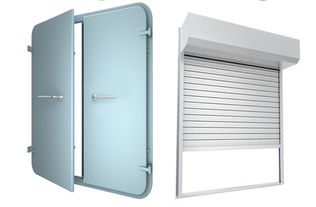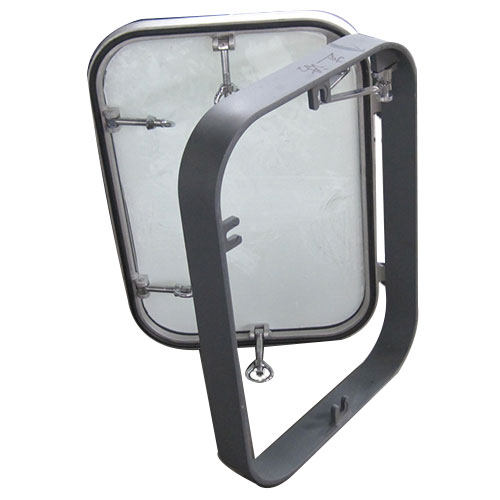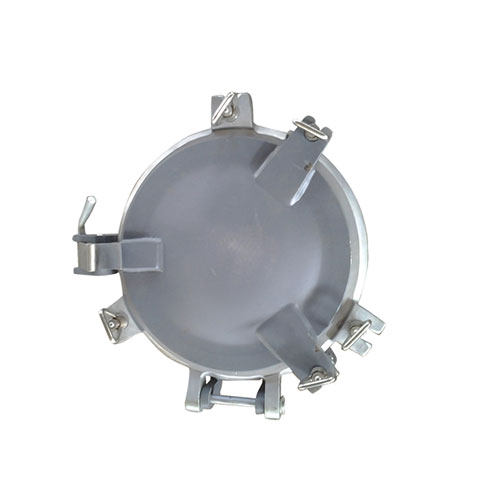Advancements in Materials and Coatings for Marine Windows
Marine windows are critical for visibility, safety, and comfort on vessels. They must withstand harsh marine environments characterized by saltwater, UV radiation, and physical impacts. Recent advancements in materials and coatings have significantly enhanced the durability, performance, and longevity of marine windows. This article explores these cutting-edge innovations and their impact on the maritime industry.

Traditional Materials and Coatings for Marine Windows
Traditional Materials of Marine Windows
This chart outlines the advantages and disadvantages of traditional materials used in marine windows.
| Material | Advantages | Disadvantages |
| Tempered Glass | High impact resistance | Can break under extreme conditions |
| Excellent optical clarity | Shatters into blunt pieces for safety | |
| Laminated Glass | Safety due to interlayer | Heavier than single-layer glass |
| Sound insulation | More expensive than tempered glass | |
| UV protection | ||
| Acrylic | Lightweight | Less scratch-resistant than glass |
| Good optical clarity | Can yellow over time under UV exposure | |
| Easy to mold | ||
| Polycarbonate | Superior impact resistance | Prone to scratching |
| Lightweight | Can become brittle over time with UV exposure |
Traditional Commonly Used Coatings for Marine Windows
| Coating | Advantages | Disadvantages |
| Anti-Reflective | Reduces glare | Can be expensive to apply |
| Enhances visibility | May wear off over time | |
| Hydrophobic | Repels water | Needs reapplication periodically |
| Keeps window clear in wet conditions | Limited protection against other contaminants | |
| UV-Resistant | Protects against UV radiation | May degrade with time and exposure |
| Prevents yellowing | Needs periodic maintenance | |
| Anti-Scratch | Provides a harder surface | Can be expensive |
| Reduces maintenance costs | May not be completely scratch-proof | |
| Thermal Coatings | Reflects infrared radiation | Can reduce optical clarity |
| Helps regulate temperature | Application can be complex |
Advanced Materials for Marine Windows
1. Chemically Strengthened Glass
- Enhanced Strength: Chemically strengthened glass undergoes a chemical process that significantly increases its surface compression, making it much stronger and more resistant to scratches and impacts than traditional tempered glass.
- Improved Safety: When broken, this glass forms smaller, less harmful pieces, enhancing safety onboard.
2. High-Performance Laminated Glass
- Multi-layer Construction: Innovations in laminated glass include the use of multiple interlayers, such as SentryGlas® ionoplast, which provide superior structural integrity and resilience.
- Superior Clarity and Protection: These interlayers also offer better optical clarity and improved protection against UV rays and sound insulation.
3. Advanced Polymers
- Enhanced Polycarbonates: New formulations of polycarbonate materials provide even greater impact resistance and optical clarity, making them ideal for high-stress marine environments.
- Scratch-Resistant Acrylics: Innovations in acrylic materials include scratch-resistant coatings integrated into the material, offering better durability without compromising clarity.
Future Developments of Marine Window Materials
1. Advanced Composite Materials
Future marine window materials are expected to incorporate advanced composites, which combine the strengths of various substances to create superior products. These composites are designed to provide enhanced impact resistance, reduced weight, and improved flexibility. For example, hybrid materials that blend glass with advanced polymers or ceramics could offer a balance between durability and clarity, addressing the high-impact demands of marine environments while reducing overall weight.
2. Enhanced Durability
The quest for more durable marine window materials continues with research into new polymers and nano-engineered materials. Innovations in this area aim to produce windows that are more resistant to impacts, scratches, and environmental degradation. Enhanced durability will reduce the frequency of repairs and replacements, contributing to lower lifecycle costs and improved vessel safety.
3. Eco-Friendly Materials
Sustainability is becoming a significant factor in material development. The maritime industry is increasingly focusing on eco-friendly materials that minimize environmental impact. Research into bio-based polymers, recycled materials, and other sustainable options is underway. These materials aim to provide the same or better performance characteristics as traditional options while reducing the ecological footprint of marine windows.
4. Improved Optical Clarity
Maintaining clear visibility is essential for marine windows. Future developments will focus on enhancing optical clarity while minimizing distortion and glare. Advances in material science, including new glass formulations and polymer technologies, are expected to produce windows with superior clarity. This improvement will benefit navigation and safety by ensuring unobstructed views and reducing eye strain for operators and passengers.
5. Thermal Management
Effective thermal management is critical for marine windows, particularly in extreme weather conditions. Future materials may feature advanced coatings or composites designed to manage heat more efficiently. This could help maintain a stable internal temperature, reduce the load on heating and cooling systems, and improve energy efficiency on marine vessels.
6. Robust Testing and Simulation
To ensure that new materials meet the rigorous demands of marine environments, enhanced testing and simulation techniques are being employed. Advanced modeling tools will allow for more accurate predictions of material performance under various conditions, including impact forces, temperature changes, and exposure to corrosive elements. This rigorous approach will lead to the development of more reliable and high-performing marine window materials.

Cutting-Edge Coatings for Marine Windows
1. Nanotechnology-Based Coatings
- Ultra-Thin Protection: Nanotechnology enables the creation of ultra-thin coatings that provide significant benefits without adding weight or thickness. These coatings offer enhanced scratch resistance, UV protection, and hydrophobic properties.
- Self-Cleaning Surfaces: Nanocoatings can create self-cleaning surfaces by repelling water and dirt, reducing maintenance efforts and keeping windows clear in harsh marine conditions.
2. Electrochromic Coatings
- Dynamic Tinting: Electrochromic coatings allow windows to change tint in response to an electrical charge. This technology provides on-demand control over light and heat entering the vessel, improving comfort and energy efficiency.
- UV and Glare Control: These coatings also offer UV protection and reduce glare, enhancing visibility and protecting the interior of the vessel.
3. Multi-Functional Coatings
- Combination of Properties: Advanced coatings now combine multiple functionalities, such as anti-reflective, hydrophobic, and UV-resistant properties in a single layer. This multi-functional approach enhances overall performance and simplifies the coating process.
- Durability and Longevity: These coatings are designed to withstand the harsh marine environment, providing long-lasting protection and reducing the need for frequent reapplication.
4. Thermochromic Coatings
- Temperature-Responsive: Thermochromic coatings change color or transparency in response to temperature changes, helping to regulate the interior temperature of the vessel by blocking or allowing heat transfer as needed.
- Energy Efficiency: By managing solar heat gain, these coatings contribute to energy efficiency, reducing the load on heating and cooling systems.

Future Directions
| Coating Technology | Potential Advantages | Challenges |
| Smart Coatings | Dynamic Control: Allows on-demand adjustment of tint and transparency based on environmental conditions. | Complexity and Cost: High cost and complexity of integration. |
| Energy Efficiency: Can improve energy efficiency by managing heat and light transmission. | Maintenance and Durability: Potential for wear and tear over time. | |
| Self-Healing Coatings | Longevity: Can repair minor scratches and damage automatically, extending the lifespan of the window. | Cost: Higher initial costs compared to traditional coatings. |
| Maintenance Reduction: Reduces the need for frequent repairs or replacements. | Performance Limits: Effectiveness may be limited by the extent of damage. | |
| Biodegradable Coatings | Eco-Friendly: Made from sustainable or biodegradable materials, reducing environmental impact. | Performance: This may not yet match the performance of conventional coatings. |
| Regulatory Compliance: Can help meet increasing environmental regulations and standards. | Cost and Availability: May be more expensive and less widely available. | |
| Integrated Sensor Coatings | Real-Time Monitoring: Incorporates sensors to monitor environmental conditions and adjust properties accordingly. | Technological Integration: Requires sophisticated technology integration and power sources. |
| Enhanced Functionality: Can provide additional data on window performance and environmental conditions. | Cost and Maintenance: Potentially high costs and maintenance requirements. |

Conclusion
Advancements in materials and coatings for marine windows are revolutionizing the maritime industry, offering enhanced durability, performance, and functionality. Chemically strengthened glass, high-performance laminated glass, and advanced polymers provide superior structural integrity and safety. Meanwhile, cutting-edge coatings utilizing nanotechnology, electrochromic properties, and multi-functional capabilities significantly improve the resilience and efficiency of marine windows. As research and development continue, the future holds even more exciting possibilities, including smart windows and eco-friendly solutions, ensuring that marine windows meet the ever-evolving demands of the maritime environment.

